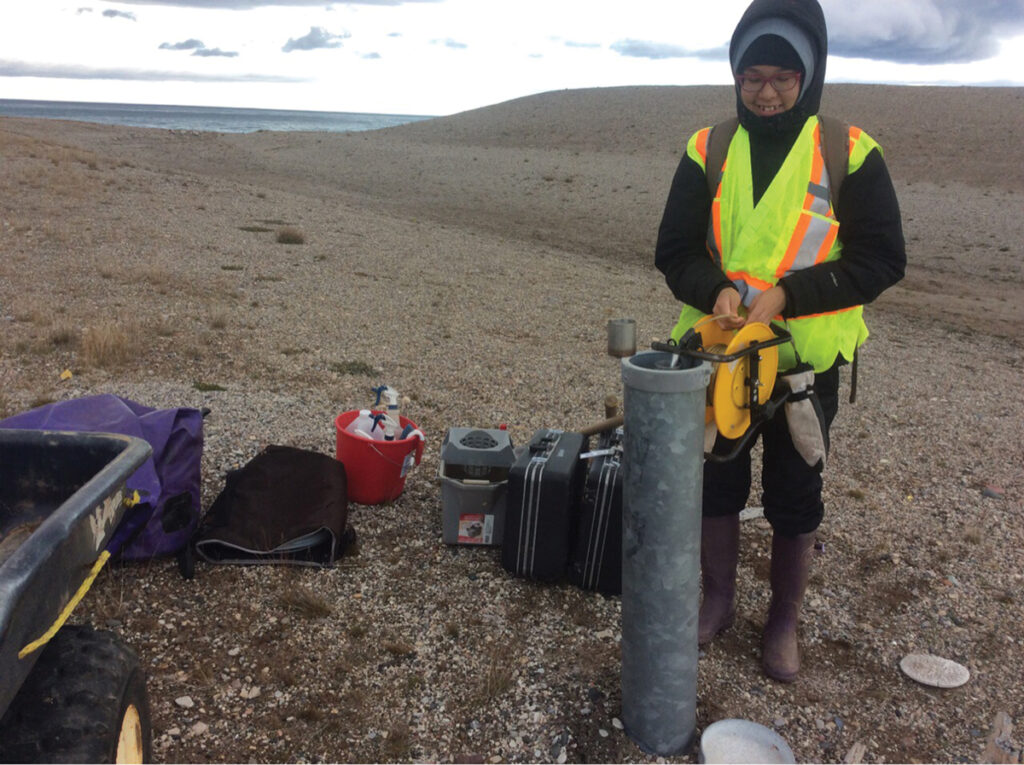Profile: Golder Associates Ltd, Healing the Land
Golder Associates’ Yukon Shop One of 165 Offices in 40-Plus Countries

Since the 1970s, engineering and consulting firm Golder Associates Ltd. has worked in the Yukon. As the number of projects in Kaska traditional territory grew, they formed a joint venture with the Liard First Nation Development Corporation in 2007. The name of the new venture was called Kēyeh Nejéh Golder Corporation (KNG).
“Kēyeh Nejéh means ‘healing the land’, which is our guiding principle as we work together,” says Tamra Reynolds, associate and senior hydrogeologist with Golder Yukon.
“We have other joint venture partnerships in Canada and are building a strong track record of working with Indigenous communities and businesses to develop training, hiring and subcontracting opportunities on our projects.”
It’s part of Golder Associates over-arching goal to serve its clients as a globally connected community collaborating to find innovative approaches to technical issues. The employee-owned firm has 165 offices in over 40 countries offering skills to clients across the infrastructure, mining, oil and gas, manufacturing and power sectors.
Two years after the formation of KNG, Golder opened a Whitehorse office in 2009. “We felt that we could service our existing clients better by having a local presence, and would hopefully grow our client base,” says Reynolds. “In the first year we had two employees and there were three people when I joined the office as a senior leader in 2013.”
Following Reynolds a year later was Hilary Machtans, a senior fisheries biologist from the Golder Yellowknife office. The employee numbers have grown steadily ever since and Golder recently moved into a larger office in Whitehorse’s Calcite Business Centre on Industrial Road.
“We now have five staff who focus on contaminated site characterization, remediation and mine reclamation and another four staff who work on water quality, fish and fish habitat, primarily for environmental assessments of new projects and during mine closure. We also provide geotechnical engineering, archaeology, hydrology, permitting and regulatory, and construction services.”
Two of Golder Yukon’s employees are Kaska (from Watson Lake and Ross River) and they assist with the on-going environmental monitoring at the Faro mine site, which ceased production in 1998.
“This past year they have assisted each month with surface water and groundwater sampling, fish, wildlife and vegetation surveys,” says Reynolds adding that the firm is planning to invest in additional training courses to support the on-going monitoring work at Faro.
Another Golder mine reclamation job was at Sa Dena Hes mine, which stopped production in 1992. Between 2012 and 2016, the firm conducted environmental assessments, a hydrogeological assessment, and a hazardous building materials assessment through the KNG joint venture.
“We also assisted with mine closure operations and regulatory submissions,” says Reynolds. “During the field work, KNG hired local Liard First Nation members in roles such as soil and groundwater sampling, driller’s helpers, wildlife monitors, and first aid providers. Golder provided training and employment opportunities to 10 individuals on this project as well.”
Golder Yukon currently liaises with KNG to review submissions to the Yukon Environmental and Socio-economic Assessment Board (YESAB) for proposed projects in the Liard First Nation Territory.
This past summer, Golder collaborated with another Northern-based partner, IMG-Golder Corporation based in Inuvik, to complete geotechnical and environmental assessments at landfills located at the former DEW line sites near Inuvik and Paulatuk. For this project, IMG-Golder hired local Inuvialuit environmental assistants and wildlife monitors.
“Our Northern offices have been established from working in the area for over 45 years,” says Reynolds. “We have developed long-term relationships with key clients, regulators, and communities in the region and we will continue to apply cost-effective solutions to address the difficult technical issues in the Canadian North.”

